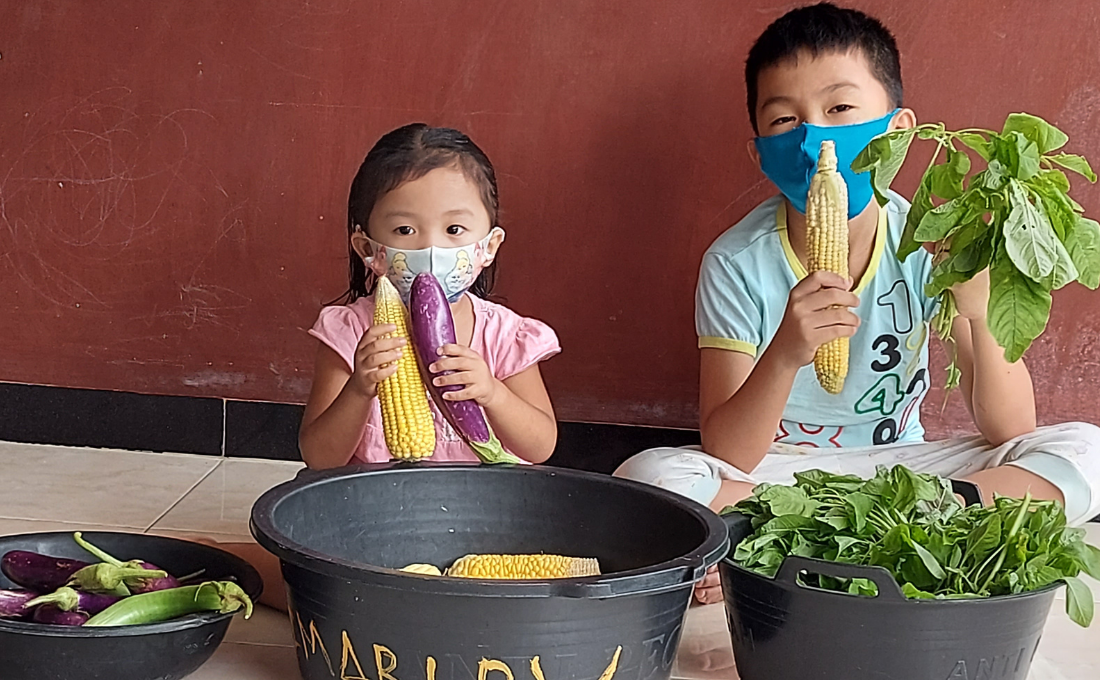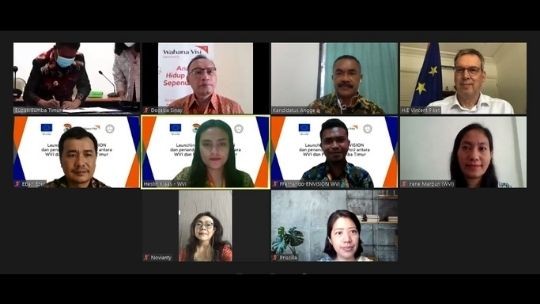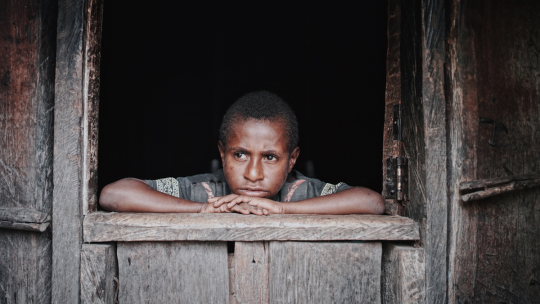Prevent Stunting with Family's Nutrition Garden

Nias Islands is one of the most beautiful and historical islands in Indonesia. But behind its beauty, a number of crucial child problems are still found here.
Data from the Indonesian Child Nutritional Status Survey (SSGBI) released by the Ministry of Human Development and Culture of the Republic of Indonesia in early 2019 describes the prevalence of stunting in the Nias Islands, especially South Nias Regency, at 57%. This value decreased to 34.4% based on SSGBI 2021 data. It means that the stunting rate experienced by children under five in the South Nias region is still very high.
Yermina, 32, is one of the posyandu cadres and mother of two children who really care about stunting in her village. The mother of Marlon, 7, and Futty, 4, received assistance from Wahana Visi Indonesia and participated in various child health programs, including the nutrition garden. The nutrition garden is a community-based program to improve family nutrition through the use of the family yard.
Yermina has attended training on nutrition gardens since 2020. With her background as a farmer, the nutrition garden program really caught her attention. She can not only grow vegetables in his yard but also raise catfish. Now, after two years of implementing a nutrition garden at home, Yermina's yard is full of vegetables. There is also a catfish pond that is ready to provide a source of protein for her family.
“By cultivating a nutritional garden using vegetables and catfish, we can provide nutritious food to our children. By fulfilling this nutrition, the stunting rate in our village can decrease. We can also save money because we no longer buy vegetables and fish at the market,” she said.
Yermina and other posyandu cadres who attended training on nutrition gardens have now also seen positive changes. The stunting rate in their village has decreased because the nutritional need has been fulfilled.
The nutrition garden program is also implemented in neighboring villages in Nias Regency. The results are starting to have an impact.
As of August 2021, the stunting prevalence rate in South Nias Regency decreased to 22% (based on Recording and Reporting Community-Based Nutritional App or ePPGBM 2021 data) from the previous 24% (based on 2019 ePPGBM data related to stunting prevalence), and the nutrition garden program contributed to the decline in stunting rates in this regency.
Written by Juni Arman Hulu, Health Coordinator, Wahana Visi Indonesia Nias Program Area and Rena Tanjung, Communications Officer, Wahana Visi Indonesia



